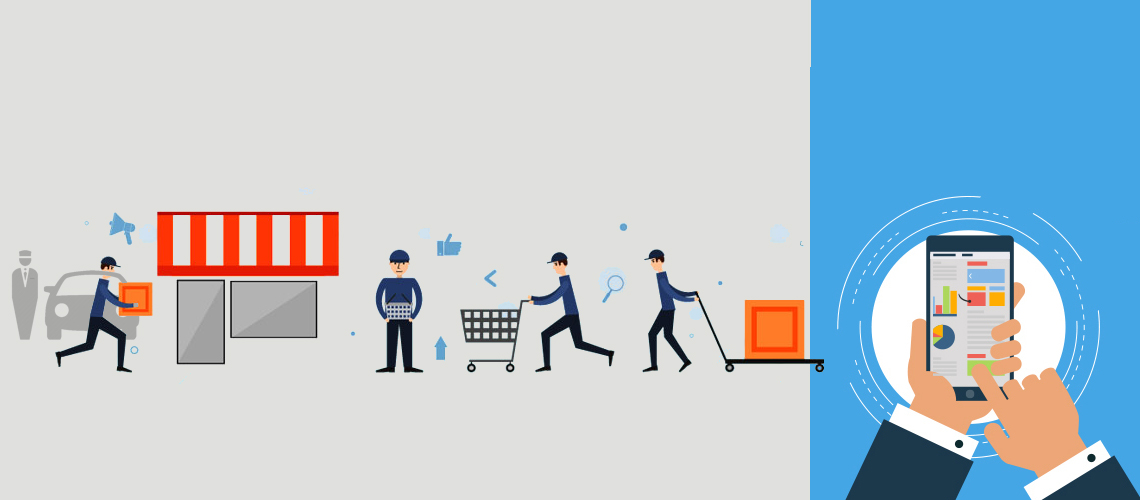
Consumers nowadays spend a very large percentage of their digital media time on mobile apps. Many enterprises already use their mobile apps as a powerful marketing tool to promote and sell their products or services. Several studies suggest companies nowadays prefer on-demand mobile apps to maximize sales by delivering on-demand products or services to consumers. Like custom mobile apps, on-demand mobile app development is done according to precise business needs.
But these apps enable enterprises to maximize sales by providing products or services to customers on-demand. When a consumer uses an on-demand mobile app for the first time, the app captures his personal information and credit card details. The consumer can avail the specific product or service on-demand subsequently simply by sending a request through the app. Each time a customer sends a request through the app, a trigger is generated in the system to meet his demand precisely and timely.
At present, technology-driven companies like Uber, Airbnb and Peapod have made demand mobile apps an integral part of their core business model. Uber uses location-based apps to provide on-demand taxi services to customers in a safe, convenient, and inexpensive way. Likewise, Airbnb uses on-demand mobile apps to provide hospitality services to customers across countries. An enterprise can always opt for on-demand mobile app development reach out to customers, boost sales, and meet latest trends.
Understanding Important Aspects of On-Demand Mobile App Development
Use Mobile Apps to Aggregate Demand
On-demand mobile app development helps enterprises to aggregate demand for their products or services through custom mobile apps. An enterprise can use the app as a robust tool to communicate with customers and allow customers to place order. The customers can place order simply by sending a request through the on-demand mobile app.
Fulfill Customer Demand Offline
An enterprise can use the on-demand mobile app to aggregate demand for its products or services over the internet. But it cannot fulfill the order online. Each time a customer send a request through the app, a trigger will be generated in the system. The enterprise has to complement and respond to the trigger through offline services. It must ensure quick, safe, and inexpensive delivery of the product/service to retain existing customers, acquire new customers, and maximize sales.
Bridge the Gap between Demand and Supply
An enterprise can opt for on-demand mobile app development to simplify its business processes and operations. It can use the app as a robust tool to receive customer requests and aggregate demand. At the same time, the app will make it easier for employees of the organization to respond to customer request proactively and scale resources according to rising demands. The employees can further use robust solutions to track orders and manage product delivery efficiently.
Emphasis on User Interface
The on-demand mobile apps enable customers to order product or services in a quick, convenient, and secure way. Also, a customer can use the app to order a product or service anytime and anywhere. Hence, the on-demand mobile app development strategy must focus on creating a user interface which is simple and easy-to-use. The customer must be able to sign in, login and access the app without any hassle or delay. The usability and simplicity of the user interface will contribute immensely towards making the app popular and drive online sales.
Accelerate Various Customer Touch Points
An enterprise must remember that the on demand mobile app will affect all customer touch points. For instance, a customer will use the on demand mobile app to choose the product/service, place order, make payment, and repurchase the product/services. The on demand mobile app development strategy must focus on each customer touch point to enhance the app’s user experience and engage customers.
Speed up Delivery
A large percentage of customers nowadays prefer on demand mobile apps to mobile commerce apps to get the products or services delivered instantaneously. Unlike mobile commerce apps, an enterprise must speed up delivery to make its on demand mobile app popular and retain customers. Hence, an enterprise must complement the app with a robust and fast product delivery system. Also, it must explore ways to promote customer loyalty by curtailing delivery time consistently.
Keep Online Payment Frictionless
The on-demand mobile apps enable customers to order products/services anytime and anywhere. Also, they allow customers to make payment without using cash. Hence, customers opt for apps that enable them to make payment in a quick, convenient, and secure way. The on-demand mobile app must allow customers to choose from a variety of cashless payment options and use reliable payment gateway. The customers will return to the on-demand mobile app regularly if they can use their preferred payment option and make payment securely.
Option to Evaluate Customer Experience
Nowadays, customers have option to choose from a number of similar on-demand mobile apps. Many mobile app developers choose a new on-demand mobile app based on experience of other customers. Hence, the on-demand mobile app development strategy must focus on persuading customers to review and rate the business, products, or experience. The real-time feedback shared by existing customers will persuade new customers to trust a new on-demand mobile app and place order.
On the whole, on-demand mobile app development helps enterprises to interact with customers proactively and deliver on-demand products or services. However, each enterprise needs custom on-demand mobile apps according to its business model and requirements. Also, it must customize the app design, user interface, features, and process flow according to the target audience to drive sales over a longer period of time.